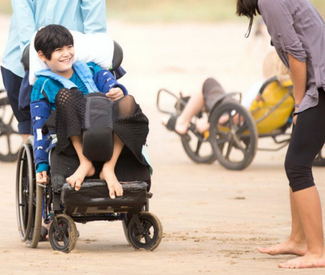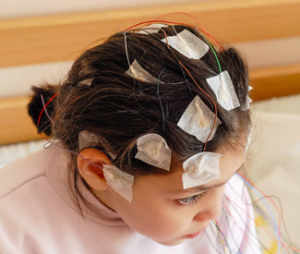In the United States alone, statistics show that muscular dystrophy (MD) impacts a quarter of a million people, the vast majority being male. About one out of every 3,500 male babies is born with one of the more than 30 types of MD.
Here, we’ll discuss what muscular dystrophy is, how it presents in patients, the various types of muscular dystrophy, how it’s treated, and the state of modern research in search of an effective prevention and cure.
What is muscular dystrophy?
The etymological origin of the term “dystrophy” is the result of joining two Greek words: dys, meaning “faulty” or “difficult,” and troph, meaning “nourish.”
Muscular dystrophy is a relatively rare condition, first discovered in the 19th century, which almost exclusively affects males due to the role of chromosomes in the development of the disease.The reason that muscular dystrophy predominately affects boys and not girls is that the condition results from an abnormality in the dystrophin gene on the X chromosome, which boys have only one of. Girls can carry the genetic aberration, but because they have two X chromosomes, the healthy X chromosome usually dominates. As a consequence, they generally don’t develop symptoms.

The abnormal function of the dystrophin gene causes the improper production of proteins that protect muscle fibers, leading to progressive degeneration of the skeletal muscles.
What are the symptoms of muscular dystrophy?
The main feature of muscular dystrophy is the progressive weakening and degeneration of the skeletal muscles. Critically, the progressive nature of the disease means that the symptoms tend to become more severe and debilitating over time. Eventually, many patients lose their ability to walk.
Due to the weakening of the skeletal muscles, muscular dystrophy can impact patients’ day to day lives in the following ways:
- Trouble using arms for activities such as gripping and carrying items
- Breathing issues. The muscles governing the breath may deteriorate, ultimately leading in some cases to a need for a ventilator to assist in breathing
- Scoliosis (irregular spinal curvature). The weakened muscles around the spine might fail to hold it properly in place
- Heart problems. Patients with muscular dystrophy, especially in the advanced stages, may experience heart issues.
- Swallowing difficulties. In some cases, a breathing tube might be recommended by a doctor to supplement a patient’s nutrition when swallowing becomes problematic.
What are the different types of muscular dystrophy (MD)?
Patients can be affected by multiple forms of muscular dystrophy (nine in total), which have unique sets of symptoms and treatment strategies. Let’s survey a handful of the most common types of muscular dystrophy and how they impact patients’ lives.
Duchenne muscular dystrophy (DMD)
Duchenne MD is the most common form of muscular dystrophy. The condition primarily affects boys. It is caused by the absence of a protein called dystrophin which is essential in maintaining muscle integrity.
Symptoms are first noted between the ages of 3 and 5 years and progress rapidly. Many boys are unable to walk by age 12. As the disease progresses the muscles that control breathing and the heart muscle are affected. The boy may require a ventilator and heart medicines in the late stages of the disease.

Becker muscular dystrophy (BMD)
Becker MD is similar to Duchenne MD but is generally milder as some dystrophin is present in the muscles. It is commonly seen to affect muscles in the pelvis, thighs, shoulders, heart, and hips.
Facioscapulohumeral muscular dystrophy (FSHD)
Facioscapulohumeral muscular dystrophy (FSHD) usually has its’ onset in the teenage years It also causes progressive weakness of muscles but only in the face, arms, legs, and around the shoulders and chest. It progresses slowly and varies widely in the degree of weakness.

Myotonic muscular dystrophy
Myotonic MD is the most common adult form; however, it’s possible that symptoms can be present from birth. There are two types of myotonic MD, with type 2 being less severe than type 1.
Myotonic MD causes muscle weakness, cataracts, heart abnormalities, and insulin resistance. Symptoms worsen slowly over decades.
How is muscular dystrophy treated?
There is no specific treatment to halt or reverse any form of MD, although genetic research is ongoing and some promising medications have been developed.
Other treatments include physical, occupational, and speech therapies, braces or other devices to support the muscles, and treatment of respiratory and cardiac problems.
The current state of muscular dystrophy research
As any patient or caregiver can attest to, muscular dystrophy can be extremely debilitating. The good news is that the current state of muscular dystrophy research, much of which is funded through the National Institutes of Health (NIH), is promising.
“Advances in gene sequencing [have] aided the identification of genes that may be involved for most types of muscular dystrophy… In recent years, research into the underlying disease mechanisms has created new opportunities for therapy development in nearly all types of MD… Federal funding, through the NIH and other agencies, as well as the venture philanthropy programs supported by patient advocacy groups, have attracted biotechnology and pharmaceutical firm investments into therapies for the MDs.”
Child Neurology Center of Northwest Florida is proud to lead the fight against MD through innovative research.
Contact Child Neurology Center of Northwest Florida to learn more about muscular dystrophy and the search for a cure
At Child Neurology Center of Northwest Florida, we aggressively treat muscular dystrophy in our patients using the latest modalities and technologies. We’re also actively engaged in the search for effective treatments and, ultimately, prevention and cure for this devastating condition.
To learn more about muscular dystrophy, please don’t hesitate to contact us. We’re proud to serve residents of Northwest Florida in multiple ways, including with education.
In addition, further information is available from the Muscular Dystrophy Association and the International Myotonic Dystrophy Organization.




